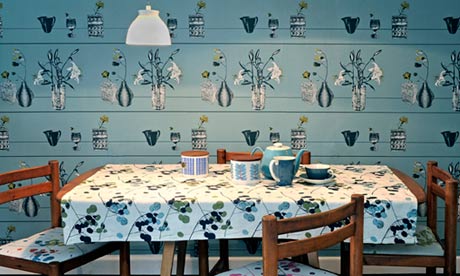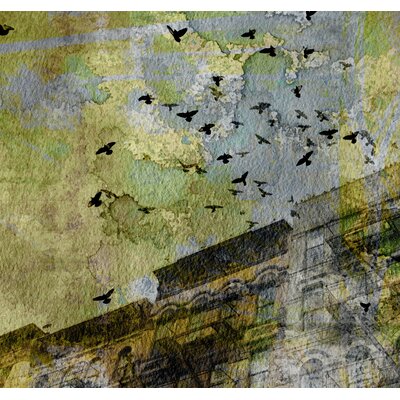Designer Wallpaper Biography
For most of its history wallpaper has been the poor relation of the decorative arts: because it is fragile, ephemeral, and easy to replace it has often disappeared from the historical record. The history of wallpaper has been based largely on those pieces which have passed into archives and museum collections, supplemented by those papers that survive in historic buildings, and those represented in pictorial records of interiors.
Wallpaper has generally been thought of as background rather than foreground (with some notable exceptions such as Chinese papers and the early 19th-century French scenic decorations). Nevertheless, its role in the overall decorative scheme is a vital one, and the choice of wallpaper affects the mood and style of a room, and may influence the choice of other furnishings. The wallpaper itself may be indicative of the function of a room, and will often reflect the age, status or gender of its inhabitants or habitual occupants. William Morris recognised the importance of wallpaper when he advised in one of his lectures;
'Whatever you have in your rooms think first of the walls for they are that which makes your house and home, and if you do not make some sacrifices in their favour you will find your chambers have a kind of makeshift, lodging-house look about them…'
Yet divergent opinions about wallpaper were apparent from the beginning. Some considered it to be attractive, clean and durable, whereas others regretted that the fashion for wallpaper had supplanted other methods of wall-decoration. This widespread and continuing ambivalence towards wallpaper can, to a large extent, be attributed to wallpaper’s essentially imitative character. It is almost always designed to look like something else – tapestry, velvet, chintz, silk drapery, linen, wood, masonry, a mural. For much of its history wallpaper has appeared (at least at first sight) to be something other than merely printed paper, and as an affordable substitute for more costly materials it has never quite thrown off the taint that comes from being a cheap imitation.








For most of its history wallpaper has been the poor relation of the decorative arts: because it is fragile, ephemeral, and easy to replace it has often disappeared from the historical record. The history of wallpaper has been based largely on those pieces which have passed into archives and museum collections, supplemented by those papers that survive in historic buildings, and those represented in pictorial records of interiors.
Wallpaper has generally been thought of as background rather than foreground (with some notable exceptions such as Chinese papers and the early 19th-century French scenic decorations). Nevertheless, its role in the overall decorative scheme is a vital one, and the choice of wallpaper affects the mood and style of a room, and may influence the choice of other furnishings. The wallpaper itself may be indicative of the function of a room, and will often reflect the age, status or gender of its inhabitants or habitual occupants. William Morris recognised the importance of wallpaper when he advised in one of his lectures;
'Whatever you have in your rooms think first of the walls for they are that which makes your house and home, and if you do not make some sacrifices in their favour you will find your chambers have a kind of makeshift, lodging-house look about them…'
Yet divergent opinions about wallpaper were apparent from the beginning. Some considered it to be attractive, clean and durable, whereas others regretted that the fashion for wallpaper had supplanted other methods of wall-decoration. This widespread and continuing ambivalence towards wallpaper can, to a large extent, be attributed to wallpaper’s essentially imitative character. It is almost always designed to look like something else – tapestry, velvet, chintz, silk drapery, linen, wood, masonry, a mural. For much of its history wallpaper has appeared (at least at first sight) to be something other than merely printed paper, and as an affordable substitute for more costly materials it has never quite thrown off the taint that comes from being a cheap imitation.
Designer Wallpaper

Designer Wallpaper

Designer Wallpaper

Designer Wallpaper

Designer Wallpaper

Designer Wallpaper

Designer Wallpaper

Designer Wallpaper

Designer Wallpapers
Designer Wallpaper By Graham & Brown
Designer Wallpaper
En Norsk Designer - Wallpaper Tutorial










































